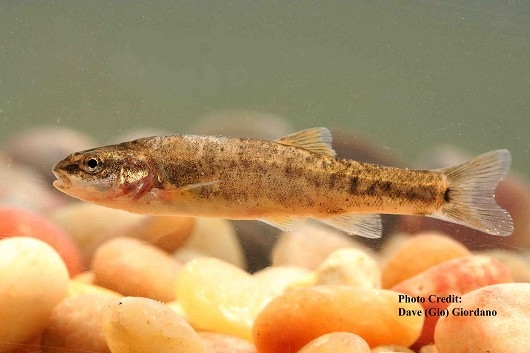Posts Tagged: California native
The Big 43: The California Native Plants, Plus One, Studied in UC Davis Research
When pollination ecologists from the Neal Williams lab at the University of California Davis--Ola Lundin, Kimiora Ward and Professor...
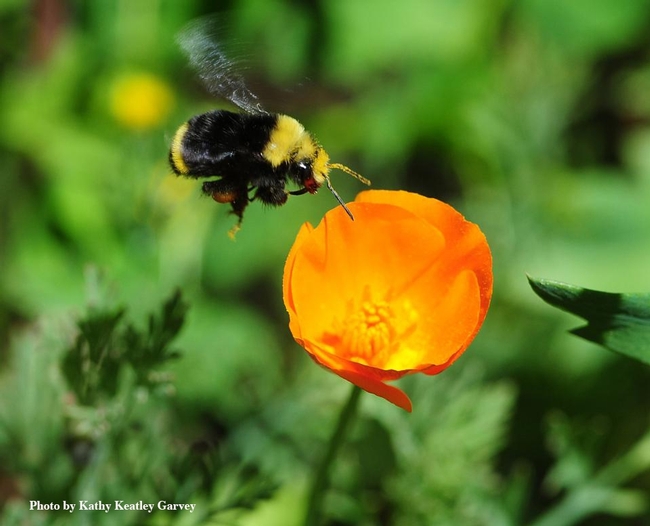
A yellow-faced bumble bee, Bombus vosnesenskii, heading toward California poppy,Eschscholzia californica. (Photo by Kathy Keatley Garvey)
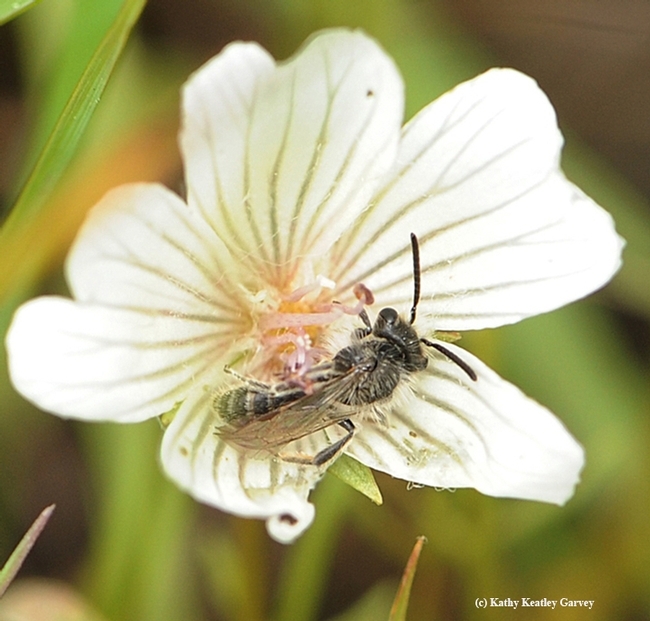
Andrena (mining bee) on meadowfoam, Limnanthes alba. (Photo by Kathy Keatley Garvey)
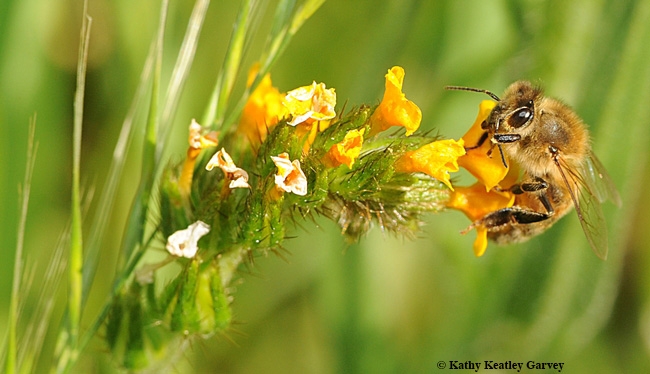
A honey bee, Apis mellifera, on fiddleneck, Amsinckia. (Photo by Kathy Keatley Garvey)
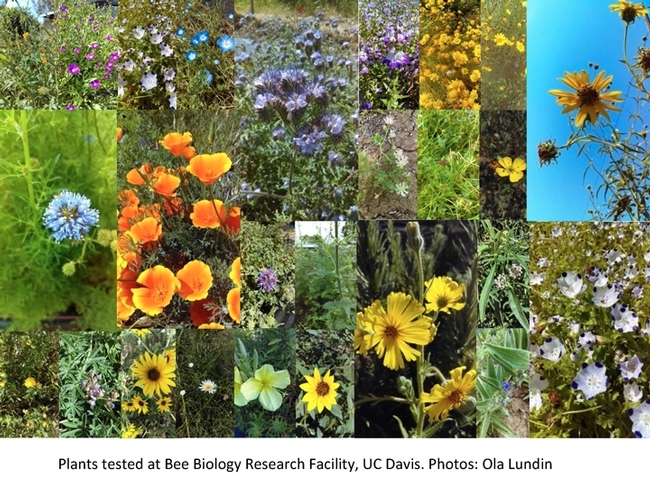
Native plant species (Photos by Ola Lundin)
Climate change threatens California native fish
The study, published online in May in the journal PLOS ONE, assessed how vulnerable each freshwater species is to climate change and estimated the likelihood that those species would become extinct in California within 100 years.
The researchers found that, of 121 native fish species, 82 percent are likely to be driven to extinction or very low numbers as climate change speeds the decline of already depleted populations. In contrast, only 19 percent of the 50 non-native fish species in the state face a similar risk of extinction.
“If present trends continue, much of the unique California fish fauna will disappear and be replaced by alien fishes, such as carp, largemouth bass, fathead minnows and green sunfish,” said Moyle, who has been documenting the biology and status of California fish for the past 40 years.
“Disappearing fish will include not only obscure species of minnows, suckers and pupfishes, but also coho salmon, most runs of steelhead trout and Chinook salmon, and Sacramento perch,” Moyle said.
Fish requiring cold water, such as salmon and trout, are particularly likely to go extinct, the study said. However, non-native fish species are expected to thrive, although some will lose their aquatic habitats during severe droughts and low-flow summer months.
The top 20 native California fish most likely to become extinct in California within 100 years as the result of climate change include (asterisks denote a species already listed as threatened or endangered):
- Klamath Mountains Province summer steelhead
- McCloud River redband trout
- Unarmored threespine stickleback*
- Shay Creek stickleback
- Delta smelt*
- Long Valley speckled dace
- Central Valley late fall Chinook salmon
- Kern River rainbow trout
- Shoshone pupfish
- Razorback sucker*
- Upper Klamath-Trinity spring Chinook salmon
- Southern steelhead*
- Clear Lake hitch
- Owens speckled dace
- Northern California coast summer steelhead
- Amargosa Canyon speckled dace
- Central coast coho salmon*
- Southern Oregon Northern California coast coho salmon*
- Modoc sucker*
- Pink salmon
The species are listed in order of vulnerability to extinction, with No. 1 being the most vulnerable.
Climate change and human-caused degradation of aquatic habitats is causing worldwide declines in freshwater fishes, especially in regions with arid or Mediterranean climates. These declines pose a major conservation challenge. However, there has been little research in the scientific literature related to the status of most fish species, particularly native ones of little economic value.
Moyle saw the need for a rapid and repeatable method to determine the climate change vulnerability of different species. He expects the method presented in the study to be useful for conservation planning.
“These fish are part of the endemic flora and fauna that makes California such a special place,” said Moyle. “As we lose these fishes, we lose their environments and are much poorer for it.”
Co-authors of the study were postdoctoral students Joseph Kiernan, Patrick Crain and Rebecca Quiñones of the Center for Watershed Sciences at UC Davis. Funding for the study was provided by the California Energy Commission.
Media coverage of the study includes:
USA Today: Climate change threatens 82% of native California fish
LA Times: California native fish could disappear with climate change
Spring at The Gardens at Heather Farm
During my teenage years, the head lifeguard at the pool that I volunteered at, used to bring a group of us teenagers to picnic and swim at Heather Farm in Walnut Creek each summer. As such, I have always associated Heather Farm with those memories, not realizing that Heather Farm also included a beautiful 6-acre garden, which I had the pleasure of visiting recently.
Like The Ruth Bancroft Garden that I blogged about recently (also in Walnut Creek, just minutes from The Gardens at Heather Farm), Heather Farm Park and The Gardens at Heather Farm were named after the original ranch located on the very site, and fancifully, the ranch owners' prized race horse, King Heather. There are 20+ gardens of varying sizes and themes in all, managed completely without the use of pesticides. To give you an idea as to what you should expect to see and experience, the following is a list of gardens/plots on site: The Ruth Howard Entrance Garden, Native Plant Garden, Diablo Ascent Garden, Tree Grove, Ash Tree Alley, Stroll Garden, Meadow Garden, Heritage Garden, Mother’s Garden, Black Pine Garden, Ward Garden, Cowden Rose Garden, Waterfall Garden, Rockery, Butterfly Garden, Mural Garden, Children’s Garden, Riparian Garden, Water Conservation Garden, Sensory Garden, and the Blue Star Memorial Garden.
Some highlights of The Gardens include the very beautiful and showy Cowden Rose Garden that takes center stage the moment you enter The Gardens (Tip: now is a great time when everything is in bloom!). Equally beautiful, but more understated, is the shade garden. There is a section for California native plants, a tree grove, and a small patch which integrates edible plants with ornamentals—always one of my perennial favorites.
With how beautiful and well-maintained The Gardens is, it is hard to believe that the grounds are managed by a volunteer-based nonprofit employing a small part-time staff. It would seem that an army would be necessary to maintain the site as well as they do.
Now is a wonderful time to visit as most everything appears to be in bloom. So on one of those warm afternoons where you are at a loss for ideas of what to do, where to go, consider packing a picnic lunch and visiting The Gardens at Heather located at 1540 Marchbanks Drive, Walnut Creek, California. For more information, see http://gardenshf.org/.
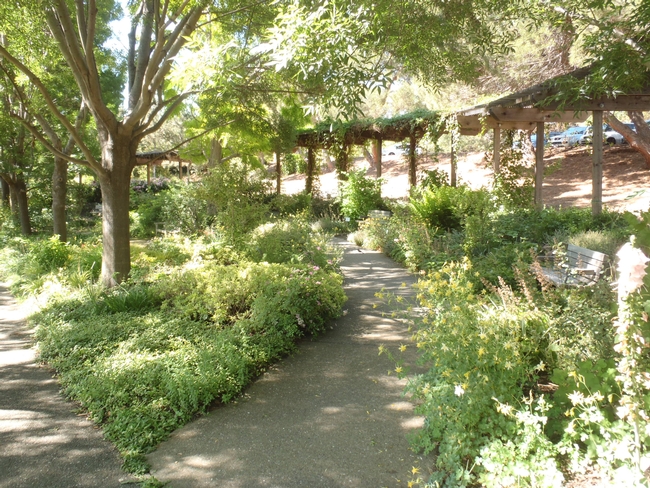
photos by Betty Homer
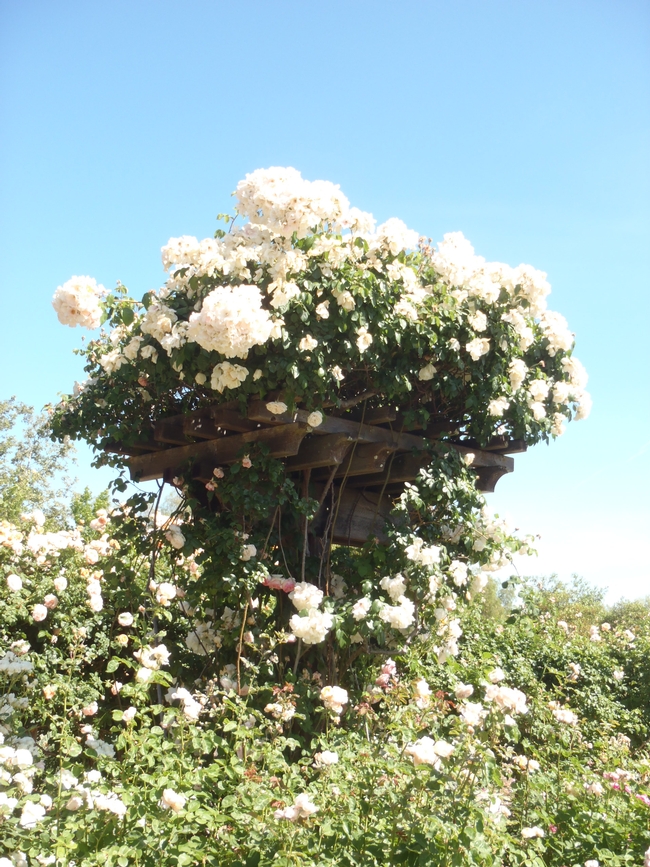
P5121506
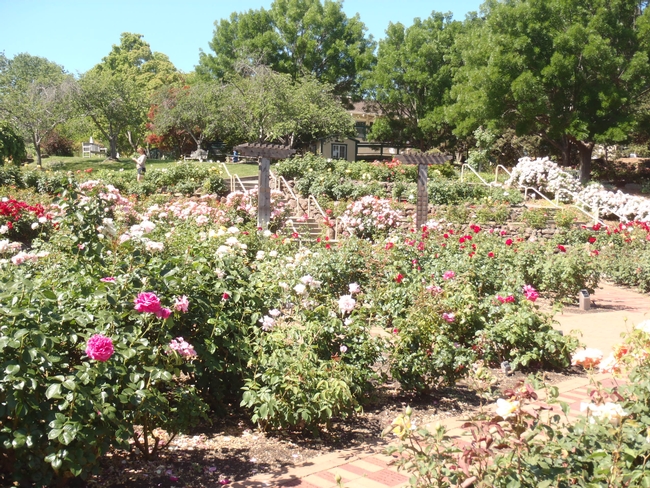
P5121508
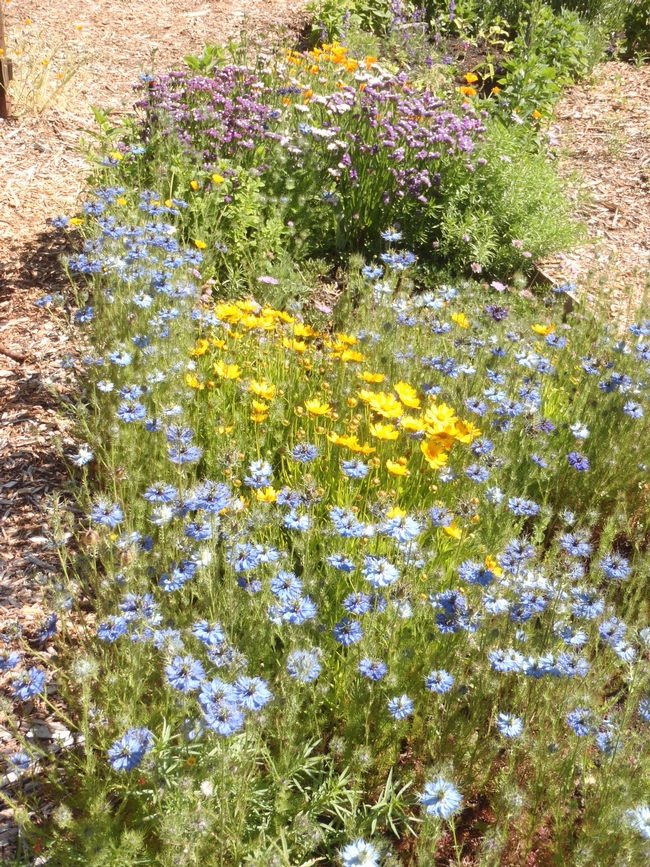
P5121512
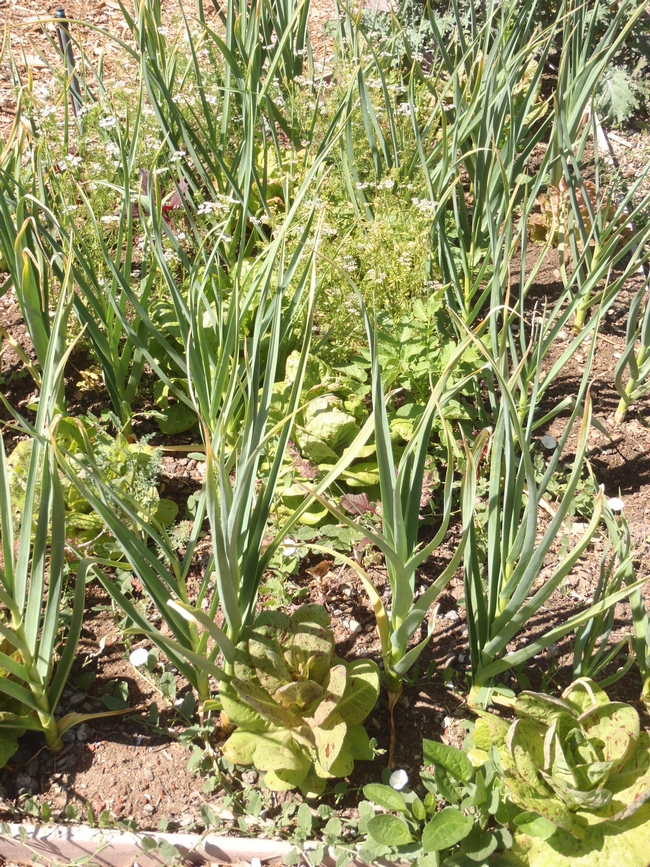
P5121514
The California Stunner
As our dry winter continues, I feel the need to drag out my soapbox once again. Isn’t it time we got real about drought-tolerant landscaping? I am not advocating severe rock-and-cactus plantings. I’m suggesting some serious consideration of California native plantings.
March is the perfect month for us to take notice of the beauty of California native plants. Poppies and lupines are coloring hillsides all across the state. Manzanitas are dotted with tiny whitish blooms. Our stately blue oaks are budding out. Ceanothus is blooming cool blue from the coast to the foothills. And all this glory comes along without supplementary irrigation!
Have you noticed the other California stunner? The Western redbud (Cercis occidentalis) is dazzling right about now, its leafless branches covered in magenta blooms. You can see the shrubs along roadsides and freeways throughout Solano, Yolo and Sacramento counties. They’re particularly beautiful on the road to Lake Berryessa.
Now this is a native I can really get behind. It is easy to grow, though a bit slow. It’s not too picky about soil, but seems to be happiest on a well-drained, sunny hillside. It is deciduous, but with year-round interest (magenta blossoms now, burgundy heart-shaped leaves in spring, seedpods throughout winter). It can be trained into a smallish tree (8-20 feet), or left to its shrubby natural growth patterns. Not much bothers redbuds. The best part, in my opinion: Once a Western redbud is established in your landscape, it does not require extra irrigation. You might attain faster growth with occasional summer water, but the tree will do just fine without.
How cool is that?
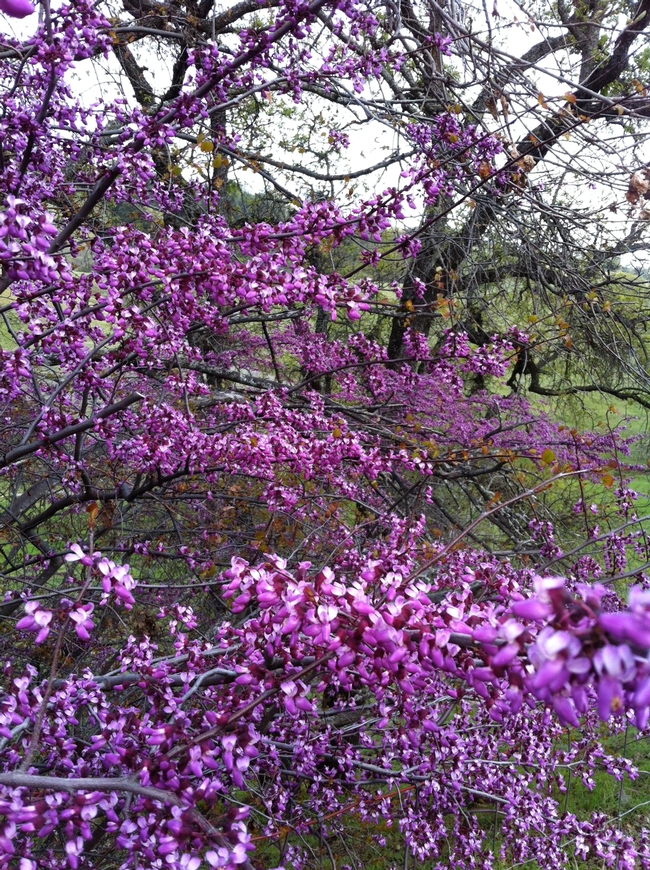
Blooming stands of Western redbud can be found in March along Pleasants Valley Road in rural Vacaville. (photo by Kathy Thomas-Rico)
California Poppy: No Nectar, Just Pollen
The latest edition of Fremontia, a publication of the California Native Plant Society (CNPS), is devoted to the state's declining prairies and...
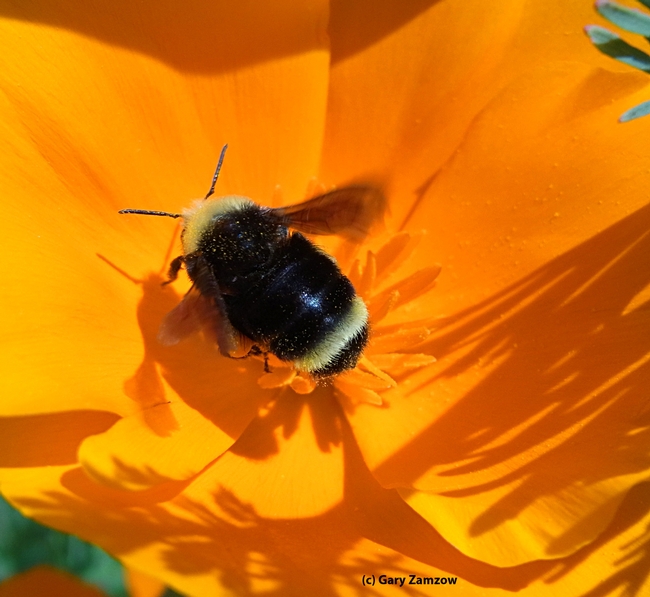
Worker bumble bee, Bombus vosnesenskii, foraging on a California poppy. (Photo by Gary Zamzow)
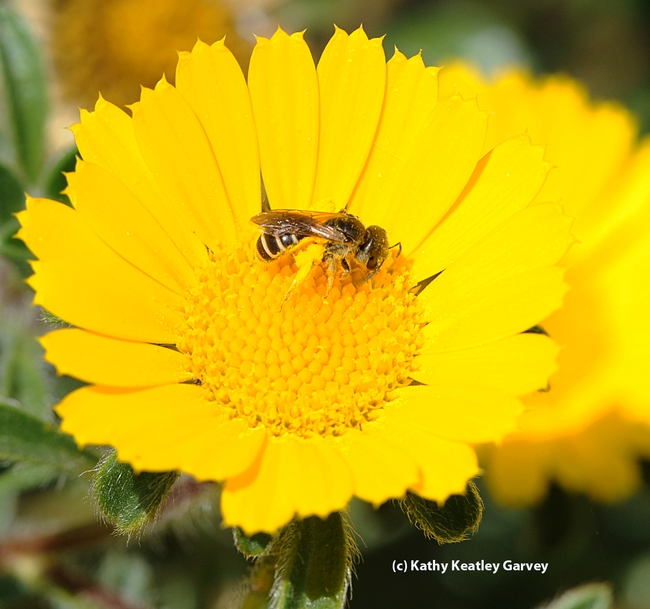
This photo, of a female sweat bee, Halictus ligatus, on a gumplant also appears in the Fremontia article. (Photo by Kathy Keatley Garvey)
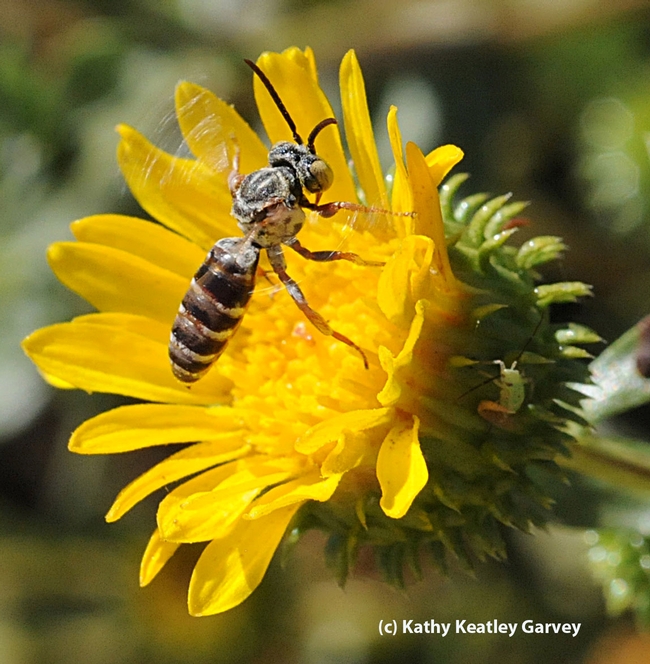
Male cuckoo bee (Triepeolus sp.) foraging on a gumplant. This is another photo in the Robbin Thorp. piece. Cuckoo bees do not gather pollen. (Photo by Kathy Keatley Garvey)


